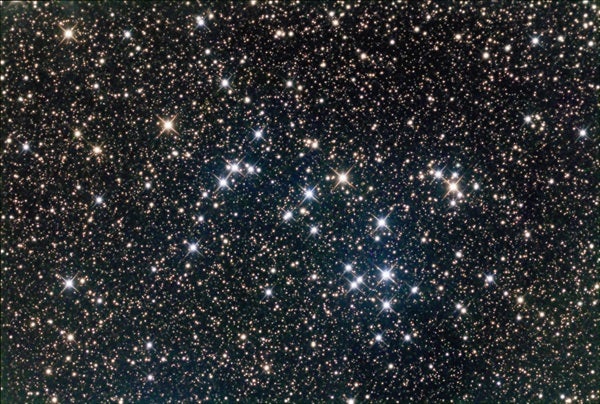Last year, I was flattered when the organizers asked me to come up with 20 binocular objects for a special observing award called the Binocular Observing Olympics, or BOO for short. Joining Stellafane’s telescope-based Observing Olympics, the 2018 BOO listed a mix of targets, some easy and others challenging. Attendees who saw at least 15 of the objects, on the honor system, received a commemorative pin.
BOO is back at this year’s convention, which takes place over the weekend of August 1–4. BOO ’19 is a new assortment of 20 targets — again, some easy and some hard. The same rules apply; anyone who sees at least 15 while attending the convention will receive a pin.
Even if you aren’t going to this year’s Stellafane, you can try your luck with the BOO objects. The full list, including finder charts, will be published on the convention’s website, stellafane.org.
Here are three from the BOO ’19 list that deserve more attention than they usually get from observers. All lie within about 10° of one another.
Let’s begin with the easiest one to spot: open cluster NGC 6633 in Ophiuchus. Measuring half a degree in diameter — as large as the Full Moon — NGC 6633 shines at 5th magnitude. That makes it easy to spy through even pocket-sized mini binoculars. Thirty stars form this striking group. The brightest shine at 8th magnitude.
Next, we have open cluster IC 4756, lying between NGC 6633 and Theta (θ) Serpentis in the constellation Serpens Cauda. Covering twice the area of its neighbor, IC 4756 may go completely unnoticed through conventional telescopes because of its size. But aim a modest binocular its way, and suddenly you’ll see the blended mist of fifty 9th- and 10th-magnitude suns. The brightest shines at magnitude 6.4 and lies toward the group’s southeastern edge.
IC 4756 carries the nickname Graff’s Cluster, after German astronomer Kasimir Graff, who independently discovered it in 1922. He was not the first to notice the cluster, however. Many credit its discovery to American astronomer Solon Bailey, who identified it on photographs taken at Harvard College’s Arequipa station in Peru. But even he wasn’t first to publish an account of IC 4756. That goes back to 1859, when the Rev. Thomas Webb mentioned in his classic book Celestial Objects for Common Telescopes that “between [NGC 6633] and Theta, nearer the former, is a beautiful large cloud of stars, chiefly 8 and 9 magnitude.”
Our final BOO target is Barnard’s Star, a 9th-magnitude red dwarf in Ophiuchus. Barnard’s Star looks like just another faint point, except for one thing: Its proper motion is the fastest of any star ever found. Proper motion is the apparent angular movement that an object shifts against the background celestial sphere over time.
The star is named after the American astronomer E.E. Barnard. He didn’t discover it, but he was first to notice its rapid movement, in 1916. Barnard’s Star displays an annual proper motion of 10.3″.
Right now, Barnard’s Star is 5.96 light-years from us, and closing slowly. It will be less than 4 light-years away in about 9,800 years. In the process, its annual proper motion will increase to 25″. But even then, it will have brightened to only about magnitude 8.5.
How can it be so close, yet still so dim? Its mass is only 14 percent of our Sun, and it radiates only 0.04 percent as much energy. Until next time, remember that two eyes are better than one.










